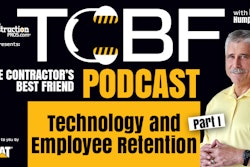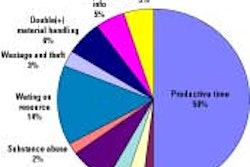Editor's Note: This article orginally appeared in an issue of Maintenance Supplies magazine. It has been edited for publication on ForConstructionPros.com. To read the orginial article, please click here.
To maintain a stable workforce, employers must actively engage their employees in different retention activities. These can range from customized compensation packages to the age-old family picnic. Whatever the case, people need to feel wanted, valued and appreciated. They want to do meaningful work and have some say in how their jobs are designed, managed and measured.
When these psychological needs are met, research shows that they'll be more likely to stick around. It's up to you to motivate them. As competition in the business world has intensified, motivation and employee retention have been under the microscope ever since to get a leg up on enhancing workforce support for key corporate initiatives.
Motivation uncovered
According to the study, "Understanding Employee Motivation," conducted by James R. Lindner at The Ohio State University Piketon Research and Extension Center, several theories on employee motivation were studied to gain a better understanding of its effect on employees, and how each can be enacted to build greater support and security in the workforce.
The study says that at one time, employees were considered just another cog in the production of goods and services, but what may have changed this way of thinking about employees was research that is commonly referred to as the Hawthorne Studies conducted by Elton Mayo from 1924 to 1932. Mayo's study found that employees are not motivated by money alone, and that their decision to stay aboard or jump ship is linked to their behavioral attitudes in the workplace. The Hawthorne Studies were instrumental as they, for all intents and purposes, began the human relations methodology to management, whereby the needs and motivation of employees become the overriding concern of managers and business owners.
Motivation matters
Why we need motivated employees is for business survival, according to the study. Motivated employees are essential components to adequately changing and adapting to the fast-paced environment of today's business world. Satisfied employees are more productive, and thus help organizations prosper as a result.
To be effective motivators, managers need to understand just what makes their employees tick, and what gets them going within the context of the roles they perform at the company. Linder argues, that of all the functions a manager performs, motivating employees is arguably the most complex. This is due, in part, to the fact that what motivates employees is constantly in motion. For example, research suggests that as employees' income increases, money becomes less of a motivator. Also, as employees get older, interesting work becomes more of a motivator.
Purpose and results
There are five major theories that have led to the modern understanding of motivation and its affects. To test these theories, employees at the Piketon Research and Extension Center and Enterprise Center were surveyed. The aim of the survey was to measure the motivational factors of the employees.
The results of the survey revealed that the top 10 motivating factors were, in order of importance:
- Interesting work
- Good wages
- Full appreciation of work done
- Job security
- Good working conditions
- Promotions and growth in the organization
- Feeling of being in on things
- Personal loyalty to employees
- Tactful discipline and
- Sympathetic help with personal problems
The audience of the study mentioned here was a highly targeted segment, but can be seen as an example of how to "get to know" your own employees and see what will motivate them to go the extra mile in making both them and your business a success.
|
Motivation and theories Vroom's theory is based on the belief that employee effort will lead to performance and performance will lead to rewards, being either positive or negative. The more positive the reward the more likely the employee will be highly motivated. Conversely, the more negative the reward the less likely the employee will be motivated. Adams' theory states that employees strive for equity between themselves and other workers. Equity is achieved when the ratio of employee outcomes over inputs is equal to other employee outcomes over inputs. Skinner's theory simply states those employees' behaviors that lead to positive outcomes will be repeated and behaviors that lead to negative outcomes will not be repeated. Simply put, managers should positively reinforce employee behaviors that lead to positive outcomes, and should negatively reinforce employee behavior that leads to negative outcomes. |



















